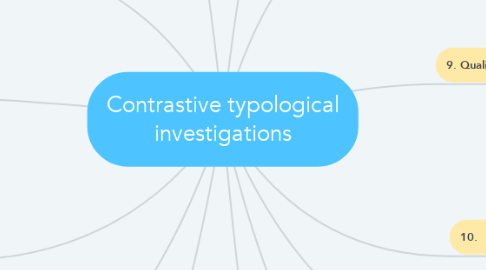Contrastive typological investigations
by Alexa Sparks


1. 1. Universal typology
1.1. investigates all languages of the world
1.2. aims at singling out common features in all languages (absolute universals)
1.3. provides the etalon language with all necessary data concerning the quantitative representation of various phonetical, lexical and grammatical features or means of expression
2. 2. Special (charactereological) typology
2.1. investigates concrete languages, one of which is the native tongue.
2.2. Metalanguage the language in which the description of isomorphic and allomor-phic features is performed is usually referred to
3. 3. General typology
3.1. has for its object of investigation the most general phonetic, morphological, lexical, syntactic or stylistic features
3.2. the first ever typological classification of languages (on the mor-phological basis)
4. 4. Partial typology
4.1. investigates a restricted number of language features/phenomena
4.2. several level typologies are distinguished: a) typology of the pho-netic/ phonological level units; b) typology of the morphological level units; c) typology of the lexical level units; d) typology of the syntactic level units.
5. 5. Areal typology
5.1. investigates common and divergent features in languages of a par-ticular geographical area
5.2. with respect to their mutual influence of one language upon the other
6. 6. Structural typology
6.1. has for its object the means of grammatical expression
6.2. the order of constituent parts at the level of words
6.3. word- combinations and sentences
6.4. aims at identifying mainly dominant features, which characterise the structural type of each of the contrasted languages
7. 7. Functional typology
7.1. investigates the frequency of language units in speech
7.2. the regularities and particularities of their use with the aim of expressing different meanings.
8. 8. Content typology
8.1. investigates the types of possible meanings expressed by various language units and their forms in the contrasted languages
9. 9. Qualitative typology
9.1. investigates predominant features (phonetic, morphological, syntactic) in the contrasted languages
9.2. characterises them according to the predominance of some of the qualities
9.2.1. due to the predominance of some morphological features languages may correspondingly be identified as synthetic, analytical, agglutinative, etc.
9.2.2. languages are found to be vocalic, consonantal or tender, harsh, etc.
